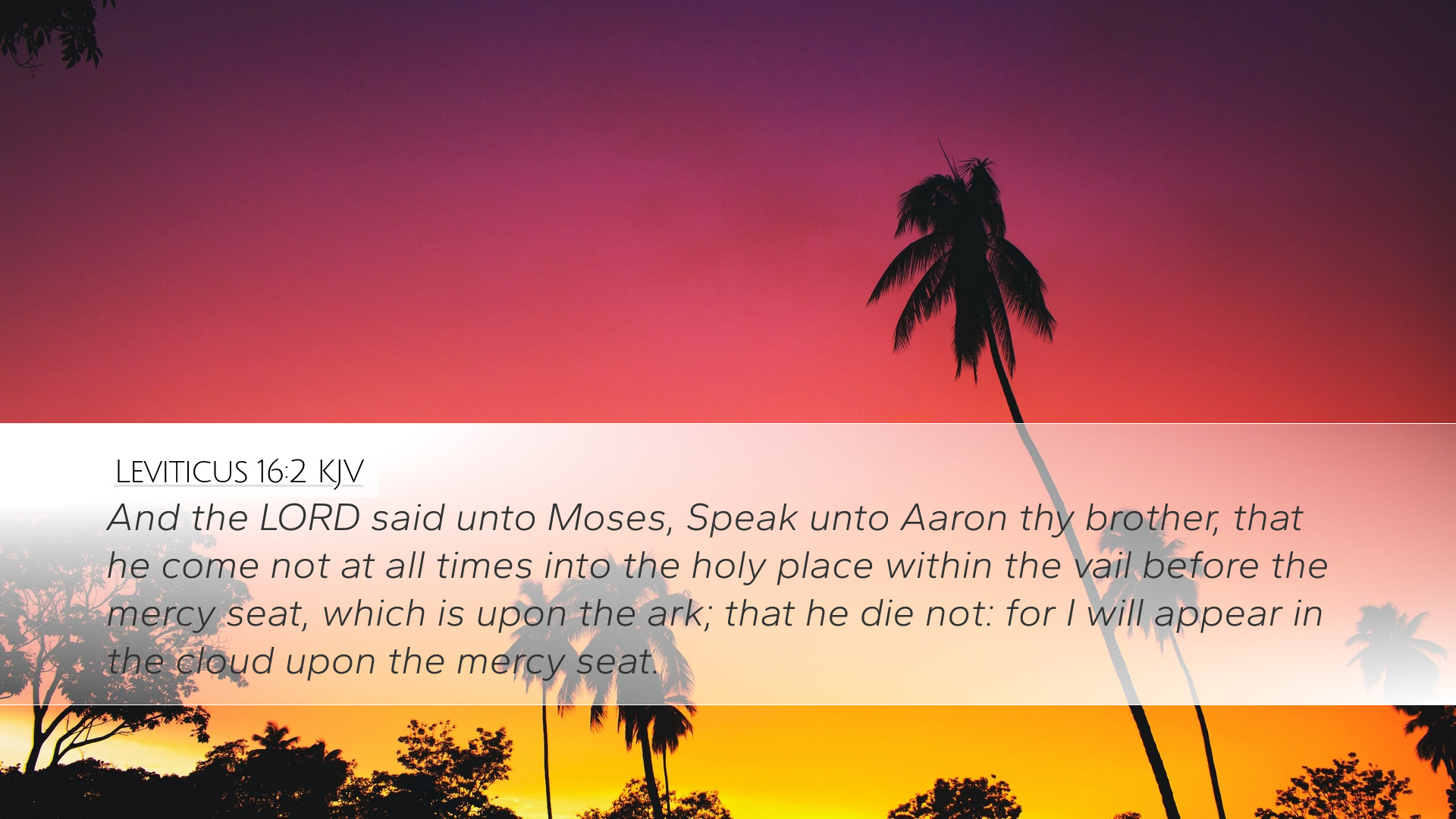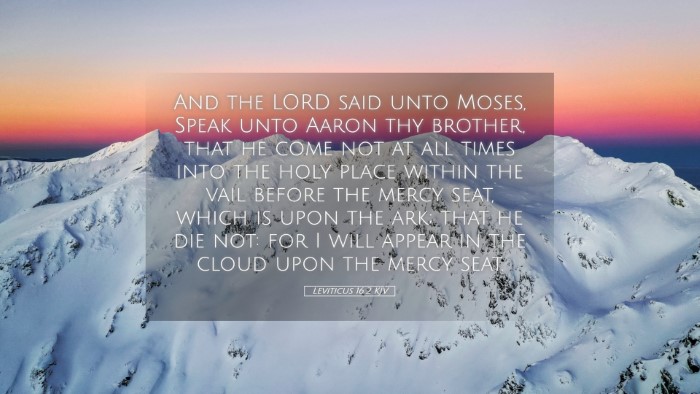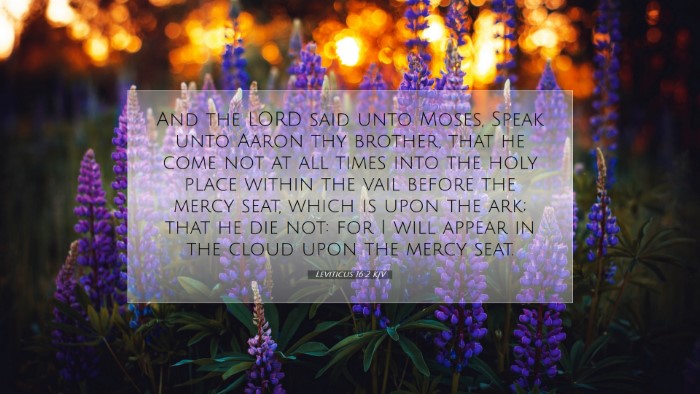Commentary on Leviticus 16:2
Bible Verse: Leviticus 16:2 - "And the LORD said unto Moses, Speak unto Aaron thy brother, that he come not at all times into the holy place within the veil before the mercy seat, which is upon the ark; that he die not: for I will appear in the cloud upon the mercy seat."
Introduction
This pivotal verse in Leviticus introduces the concept of priestly conduct before God. It serves as a significant instruction for Aaron, highlighting the sacred boundaries required for approaching God's presence. The importance of this communication lies in its implications for worship, sacrificial practices, and the understanding of holiness in the Israelite community.
Contextual Background
Leviticus is often regarded as the manual for priests and people, filled with laws intended to guide the Israelites in maintaining holiness and purity within their community and worship practices. This particular chapter focuses primarily on the Day of Atonement, outlined further in the text, revealing the necessity of atonement and the seriousness of entering God’s presence.
Analysis of Divine Communication
The approach God takes to communicate with Moses emphasizes His holiness. As noted by Matthew Henry, God’s directive instructs Moses to relay significant information to Aaron about the danger of indiscretion in entering the holy place. The divine requirement for proper preparation and timing underscores the tension between God's holiness and human unworthiness.
Divine Holiness and Human Responsibility
Albert Barnes offers insight into the significance of the mercy seat as the locus of divine presence. The instruction implies that Aaron, or any priest, must not enter at all times, suggesting a restricted access that is well-defined and carefully observed. This serves a dual purpose: it honors God's holiness while also protecting the priests from the consequence of unpreparedness, which is death.
Preparation for Entrance
The warning about entering the holy place highlights the necessity of preparation. Adam Clarke emphasizes that priestly entrance into the holy space is not to be taken lightly. It requires atonement and a calculated approach in accordance with God’s commandments. This reinforces the theme of ritual cleanliness and the need for intercessory functions on the Day of Atonement.
Implications for Worship
This directive encapsulates several theological principles that extend beyond the Old Testament context. It provides critical reflection for contemporary worship practices, suggesting that access to God's presence must be tread upon carefully and with reverence.
Reverence in Worship
Today, leaders in worship settings often reflect on this biblical principle as an acknowledgement of God’s sovereignty and holiness. The need for humility and reverence can be seen in modern rituals, where coming before God requires intentionality and preparation.
Christ as our Mediator
Moreover, from a New Testament perspective, the caution represented in Leviticus 16:2 finds its fulfillment in Christ, our ultimate High Priest. Matthew Henry asserts that while access to God was limited under the Old Covenant, Christians rejoice in the New Covenant where Christ has torn the veil, granting us direct access to the Father.
Conclusion
Leviticus 16:2 is not merely an ancient directive; it serves as an essential lesson concerning the nature of God’s holiness, the proper conduct expected from His ministers, and the critical understanding of divine human interaction in worship contexts. As both pastors and scholars meditate upon these verses, they are reminded of the continuous need to treat the sacred with seriousness and to recognize the tremendous grace bestowed upon them through Jesus Christ.
Further Reflections
- Consideration of God's Holiness: How does this understanding impact our everyday interactions with God?
- Role of Intercession: What does it mean to intercede for others with an understanding of the sacredness of God's presence?
- Modern Worship Practices: In what ways can we incorporate a deeper sense of reverence in contemporary church settings?


